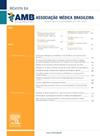Does resveratrol reduce cisplatin-induced ovarian damage?
IF 1.3
4区 医学
Q2 MEDICINE, GENERAL & INTERNAL
引用次数: 0
Abstract
SUMMARY OBJECTIVE: The objective of this study was to investigate the protectiveness of resveratrol on cisplatin-induced damage to the ovary using experimental models. METHODS: A total of 30 female Wistar-Albino rats constituted the research material. The rats were categorized into three groups: Group 1 was administered one milliliter of 0.9% NaCl solution, Group 2 was administered 7.5 mg/kg cisplatin, and Group 3 was administered 7.5 mg/kg cisplatin and 10 mg/kg resveratrol. Ovaries were extirpated in all groups and subjected to biochemical and histopathological tests. Cisplatin-induced damage to ovarian tissue was graded and scored as the total histopathological findings score. The ovarian function was assessed using immunohistochemical staining for c-kit expression. Rats’ malondialdehyde, catalase, and superoxide dismutase levels were determined. RESULTS: The histopathological finding score was significantly higher in Group 2 than in other groups (p<0.05). The superoxide dismutase and catalase levels were significantly higher in Group 3 than in Group 2 (p<0.001 for both cases). The malondialdehyde level was significantly higher in Group 2 than in Group 3 (p<0.001). CONCLUSION: The study findings demonstrated that resveratrol reduced ovarian injury and enhanced biochemical parameters following cisplatin-induced ovary damage in experimental models.

白藜芦醇能减轻顺铂引起的卵巢损伤吗?
目的:通过实验模型探讨白藜芦醇对顺铂所致卵巢损伤的保护作用。方法:以30只雌性Wistar-Albino大鼠为研究对象。将大鼠分为3组:1组给予0.9% NaCl溶液1 ml, 2组给予顺铂7.5 mg/kg, 3组给予顺铂7.5 mg/kg +白藜芦醇10 mg/kg。各组均切除卵巢,进行生化和组织病理学检查。对顺铂诱导的卵巢组织损伤进行分级,并以总组织病理学结果评分。采用免疫组化染色检测c-kit表达,评估卵巢功能。测定大鼠丙二醛、过氧化氢酶和超氧化物歧化酶水平。结果:第2组的组织病理学发现评分明显高于其他各组(p)。结论:研究结果表明,白藜芦醇可减轻顺铂致卵巢损伤后的卵巢损伤,并可提高实验模型卵巢的生化指标。
本文章由计算机程序翻译,如有差异,请以英文原文为准。
求助全文
约1分钟内获得全文
求助全文
来源期刊
CiteScore
2.20
自引率
0.00%
发文量
276
审稿时长
12 weeks
期刊介绍:
A Revista da Associação Médica Brasileira (RAMB), editada pela Associação Médica Brasileira, desde 1954, tem por objetivo publicar artigos que contribuam para o conhecimento médico.

 求助内容:
求助内容: 应助结果提醒方式:
应助结果提醒方式:


